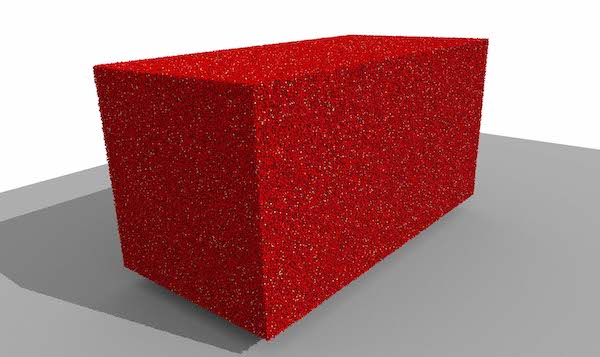HemoCell development
A high-performance cellular blood flow simulation

HemoCell is a high-performance code aim at solving cellular flow problems with the help of supercomputers. The defining features are high numerical stability at fast flows (i.e., sustained high shear rates), and outstanding computational performance, enabling macroscopic investigations. Good scaling was demonstrated up to 330 000 CPU cores (> 80% efficiency).
In order to achieve this level of performance we build on advanced computational solutions:
- Time-scale separation of the components
- Dynamic load-balancing
- Two-phase optimised communication pattern
- Fast dynamic octree for node searching
HemoCell, and the surrounding tools have been in development since 2015, involving more than a dozen core contributor.
HemoCell has a series of advanced boundary conditions that enable a broad range of applications:
- Periodic
- Continuous cellular inflow
- Rotating boundary
- Lees-Edwards
HemoCell has been used in various complex flow scenarios, for instance:
- Platelet aggregation in complex geometries
- Platelet margination in healthy and diabetic blood flows
- Stress on the wall of retinal micro-aneurysms
- Cellular conditions for high-shear thrombus formation
More information can be found on the website www.hemocell.eu, and in the documentation.
A recent (2023) bookchapter, describing HemoCell is out! Tthe author manuscript is available here: Link.
References
2020
- The influence of red blood cell deformability on hematocrit profiles and platelet marginationPLoS Computational Biology, 2020
2019
- Red blood cell and platelet diffusivity and margination in the presence of cross-stream gradients in blood flowsPhysics of Fluids, 2019
- Optimizing parallel performance of the cell based blood flow simulation software HemoCellIn Computational Science–ICCS 2019: 19th International Conference, Faro, Portugal, June 12–14, 2019, Proceedings, Part III 19, 2019
- Identifying the start of a platelet aggregate by the shear rate and the cell-depleted layerJournal of the Royal Society Interface, 2019
2018
- Inflow and outflow boundary conditions for 2D suspension simulations with the immersed boundary lattice Boltzmann methodComputers & fluids, 2018
- Numerical investigation of the effects of red blood cell cytoplasmic viscosity contrasts on single cell and bulk transport behaviourApplied Sciences, 2018
- Cell-resolved blood flow simulations of saccular aneurysms: effects of pulsatility and aspect ratioJournal of The Royal Society Interface, 2018
2017
- Hemocell: a high-performance microscopic cellular libraryProcedia Computer Science, 2017
- Cellular level in-silico modeling of blood rheology with an improved material model for red blood cellsFrontiers in physiology, 2017